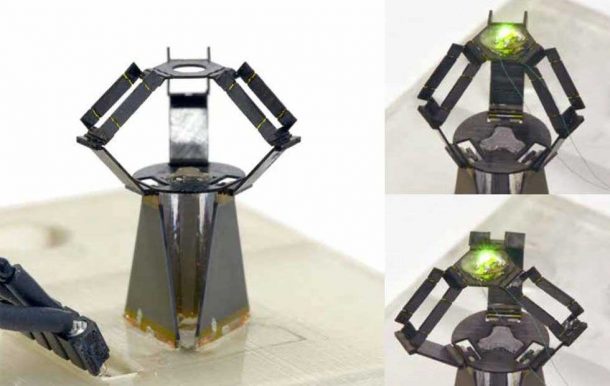Delta robots are used commonly on the assembly lines but they need a lot of space to work in. Recently, Harvard engineers developed the world’s smallest version of the ubiquitous bot. It is named the MilliDelta. As the name suggests, the size of the robot is just a few millimeters. It can lend a hand in precise picking, packing, and manufacturing and can even perform surgery on the microscale. In 2011, a flat pack fabrication technique for tiny robots was developed by Harvard’s Wyss Institute. They called it a pop-up microelectromechanical systems manufacturing (MEMS).
Over the last few years, the researchers put the idea into action to develop a self-assembling crawling robot and the agile Robobee. The MilliDelta is the latest and smallest creation to be created using this approach, it allows the team to quickly iterate on the design until they reached the final version.

The lead engineer in the Wyss team, Robert Wood, said, “The physics of scaling told us that bringing down the size of Delta robots would increase their speed and acceleration, and pop-up MEMS manufacturing with its ability to use any material or combination of materials seemed an ideal way to attack this problem.”
The MilliDelta is made up of a composite laminate structure with flexural joints. It allows the MilliDelta the same dexterity as a full-sized Delta robot. The difference is in the size of the two where one measures a minuscule and the MilliDelta can operate in a workspace of about 7mm with a precision that reaches down to 5 microns. The first author of a study describing the robot, Hayley McClintock, said, “With the help of an assembly jig, this laminate can be precisely folded into a millimeter-scale Delta robot. The MilliDelta also utilizes piezoelectric actuators, which allow it to perform movements at frequencies 15 to 20 times higher than those of other currently available Delta robots.”
The MilliDelta can copy the applications of its bigger siblings and can find use in picking and packing tiny objects of its size. For example electronic components or cells in research labs, or a steady hand for microscopic-scale surgeries. The robot performed its first surgery for cancelling out human hand tremors and did it perfectly. Fatma Zeynep Temel, the co-first author of the study said, “We first mapped the paths that the tip of a toothpick circumscribed when held by an individual, computed those, and fed them into the milliDelta robot, which was able to match and cancel them out.”
Here is a video of the MilliDelta where it can be seen in action.


